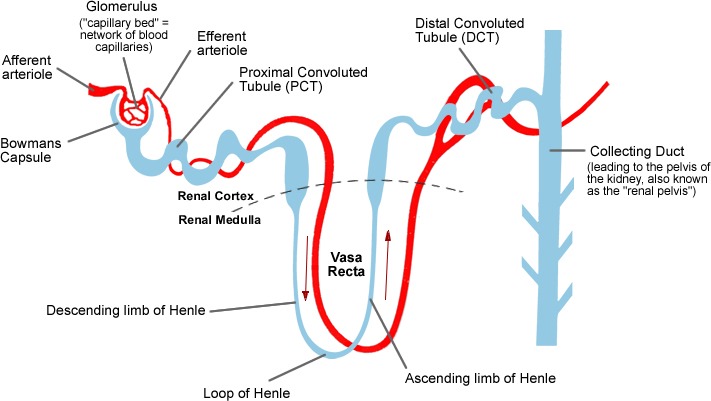What is Gitelman Syndrome?
Gitelman Syndrome is a rare, genetic, life-threatening kidney disorder.
One of the functions of the kidney is to control the levels of magnesium, sodium, potassium, and chloride in your body referred to as “electrolytes”. These electrolytes are substances that conduct positive and negative electrical particles (ions) in the body.
Gitelman Syndrome is a rare, inherited (which means you’re born with it), disorder which causes the kidney to waste magnesium, sodium, potassium, and chloride into your urine, instead of re-absorbing it back into your bloodstream as it’s supposed to.
This is due to a mutation in the gene (the SLC12A3 gene) that codes one of the electrolyte cotransporters (tells it how it should work) in the renal tubules of the kidneys. A cotransporter is a way of linking the transport of one substance across a membrane of cells whilst, at the same time, transporting a different substance in the same direction. The cotransporter that is affected is the thiazide sensitive Sodium Chloride (NaCl) cotransporter. This is in a part of the kidney called the distal convoluted tubule (DCT).
It is estimated that Gitelman Syndrome occurs in 1 in 40,000 people and can affect both male and females equally.
Precious fluids in the body
The body uses precious fluids called electrolytes.
Electrolytes regulate our nerve and muscle function, our body’s hydration, blood pH, blood pressure, and the rebuilding of damaged tissue. Various mechanisms exist in our body that keeps the concentrations of different electrolytes under strict control.
Our muscles and neurons are seen as electric tissues of the body. They are activated by electrolyte activity between extracellular, interstitial, and intracellular fluid (fluid outside, inside, or between cells).
In chemical terms, when we write electrolytes, we use the symbol + because these particles are positively charged.
A muscle contraction needs calcium (Ca2+), sodium (Na+) and potassium (K+) to be present. Incorrect electrolyte levels can lead to either weak muscles or muscles that contract too severely.
Our heart, muscle, and nerve cells use electrolytes to maintain voltages across their cell membranes and to carry electrical impulses across themselves to other cells.
The level of an electrolyte in the blood can become too high or too low. Body electrolyte levels tend to alter when water levels in the body change (when our level of hydration goes up or down). In Gitelman Syndrome, our electrolyte levels are chronically low due to the wasting in our urine (you wee it out).
What does potassium do in the body?
It plays an important role in electrolyte regulation, nerve function (particularly to make the heart muscles contract properly), muscle and digestion control, and also blood pressure. Potassium is found within the cells of the body and its levels are controlled by the kidneys.
What does magnesium do in the body?
Magnesium is an essential ingredient of the energy- production process that occurs inside the tiny structures within cells. It is an integral part of the energy (called ATP) and protein (enzymes – as co-factor and as a structural component of the muscle protein, myosin) molecules. Without this, the energy does not work properly to contract and relax the heart. It also regulates nerve function, blood sugar levels, blood pressure, and making bone and DNA.
What does Chloride do?
Chloride helps to keep the amount of fluid inside and outside of your cells in balance. It also maintains blood volume, blood pressure, and the PH (the acidity or alkalinity) of your body fluids.
About the Distal Convoluted Tubule in the Kidney
Each kidney contains many thousands of nephrons. These are the functional units in which blood is filtered to form urine. One nephron is made up of a renal corpuscle, containing tiny blood vessels where blood is filtered, and a renal tubule. A renal tubule consists of three different sections, which carry the filtered fluid, or filtrate, away from the kidney while processing it to create urine.
A distal convoluted tubule is a twisted, tube-like structure about 0.2 inches (around 5 mm) in length. This is found inside the nephron. The distal convoluted tubule is the section farthest away from the renal corpuscle, and the cells that line it are able to actively pump potentially harmful substances, such as ammonia, urea and certain drugs, out of the blood and into the urine. This is the part of the kidney where, in Gitelman’s Syndrome, the cells don’t work properly and instead of absorbing electrolytes (like potassium and magnesium) back into the body they are excreted into the urine.

